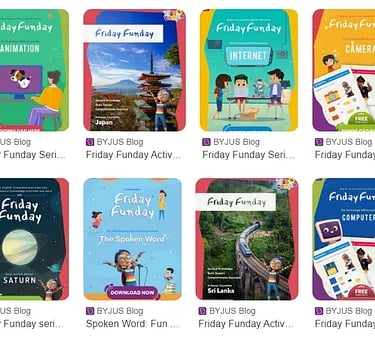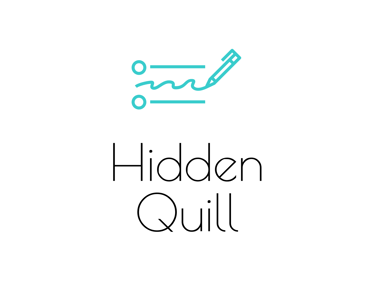Creativity, Deadlines, and the Myth of Inspiration: Lessons from Publishing 192 Weekly Editions of Friday Funday
How 192 editions of Friday Funday proved that great content isn’t about inspiration, it’s about consistency, strategy, and building an engaged audience.
CASE STUDIES
Mekhala Joshi
7/14/20254 min read


“Inspiration comes when you stick your elbows on the table, your bottom on the chair, and you start sweating. Choose a theme, an idea, and squeeze your brain until it hurts. That’s called inspiration.”
— Carlos Ruiz Zafón, The Angel’s Game
Carlos Ruiz Zafón’s books have always felt like doorways into something deeper, something magical. But this quote? This one kept me grounded through 192 editions of Friday Funday — because if there’s one thing I’ve learned, it’s that creativity isn’t about waiting for inspiration to strike.
It’s about structure. Systems. Relentless deadlines. And sometimes, it’s about reviewing yet another PDF on a Friday night, hoping you haven’t missed a typo.
The Birth of Friday Funday: From Lockdown Experiment to a Weekly Institution
Like most good things, Friday Funday started as an experiment.
The world was in lockdown. Kids were stuck at home, parents were overwhelmed, and online classes had become more exhausting than engaging. The idea? A weekly activity email — something fun, light, and interactive to break the monotony and make learning feel like play.
It was supposed to last three months. Maybe ten or twelve editions at most.
But then it grew.
By the fifth or sixth edition, it was clear this wasn’t going anywhere. Parents were expecting it. Engagement numbers kept climbing. And just like that, Friday Funday became a weekly ritual, complete with two separate editions:
LKG to Grade 1 — Playful, colourful, filled with stickers, colouring sheets, and simple puzzles.
Grades 2 and 3 — A bit more structured, with riddles, brain-teasers, reading comprehension, and problem-solving exercises.
Every week had a main theme with sub-themes, designed to keep things fresh while balancing education with entertainment.
Not a One-Person Job: The Weekly Assembly Line of Friday Funday
Writing the content? That was the easiest part.
The real challenge was making sure everything came together in time because once the cycle started, there was no stopping.
The weekly pipeline looked something like this:
Monday: Draft, edit, and curate images.
Tuesday: Send to design.
Wednesday-Thursday: The calm before the storm.
Friday: Full-scale madness. PDFs, mailers, carousels, RHS images, feature images — all needed review, approval, and last-minute fixes before the final send-off.
On paper, it was a well-structured process. In reality? A weekly roller coaster.
Tight turnarounds. Multiple versions. Endless rounds of proofreading (the kind that makes you question whether a word is spelled correctly, even when it definitely is). Creative reviews.
And, of course, subject lines.
At first, we experimented with playful, personalized subject lines. But data told us exactly what worked: “Friday Funday” in the subject line doubled open rates.
So, we optimized.
💌 [Name], Friday Funday is LIVE!
Not the most creative choice. But effective. And at the end of the day, open rates mattered more than wordplay.
The Unexpected Madness of a Missed Edition
At some point, Friday Funday stopped being just a campaign.
We didn’t notice the shift at first. Nevertheless, we felt it the week we missed an edition.
An email (or maybe a comment on a previous post — I don’t quite remember) came in: “Where is Friday Funday?
That’s when it became clear: this wasn’t just another email. It had become part of people’s routines — something parents and kids alike had come to expect.
And once something becomes a habit, consistency is no longer optional.
The Revamp That Worked (and the One That Never Happened)
Like any long-running project, Friday Funday evolved. We refined the format, redesigned the visuals, and built a structure that made every edition smoother, sharper, better.
Then there was the revamp that never happened.
Plans were drawn up. Ideas were pitched. But for reasons beyond our control, it never came to life.
Not every great idea makes it. And that’s okay. The real work isn’t in the big overhauls. It’s in the steady, week-after-week effort that keeps things moving forward, even when change doesn’t happen the way you expect.
The Real Reward: Creative Freedom in a Corporate World
One of the best things about Friday Funday? Working with the designers.
Because this wasn’t a corporate, brand-restricted, “stick to the guidelines” kind of project. It was for kids.
Which meant: No rules. No limits. No “tone it down” emails.
The designers could go all out — bright colours, quirky illustrations, playful layouts. The kind of creativity that would never make it past a corporate marketing team but worked perfectly for a seven-year-old’s inbox.
And that joy? It translated into every single edition. Of course, there were weeks of exhaustion. Some editions felt routine.
But then there were those golden moments — when a tiny idea became something bigger than expected. When we opened the final PDFs and mailers… and smiled.
Because we knew kids would too.
192 Editions Later: What Friday Funday Taught Me
Friday Funday wasn’t just about creating fun activities. It was a lesson in:
Creativity under pressure. You don’t wait for ideas. You show up and make them happen.
The power of consistency. Even when tired, even when uninspired, you deliver.
The unexpected impact of small things. What seemed like a simple weekly email became something parents and kids looked forward to every Friday.
Some editions were smooth, some were chaotic, and some were put together at the last possible minute. But no matter what, they went out—192 times in a row.
And maybe that’s the real takeaway:
Creativity isn’t about flashes of inspiration. It’s about the work you do in between.
A Note of Thanks
Friday Funday was never a solo effort — it was shaped by the incredible people behind it. A huge thanks to the designers (one who worked on it for 52 weeks (104 editions!), editors, managers, and skip-level managers who supported, refined, and believed in it every step of the way.
About the Author:
Mekhala Joshi is an IO Psychologist and content strategist with 8+ years of experience helping brands win with data-driven, authoritative content.
Connect on LinkedIn | mekhala@hiddenquill.in
© 2025 Cognikaleido Consulting
The Hidden Quill is a content studio operated by Cognikaleido Consulting.
Working between Jabalpur, MP & Mumbai, MH, India
Email: [mekhala@hiddenquill.in] | [Privacy Policy] | [LinkedIn ] | [Sitemap] | Website built with Hostinger Website Builder
